Association of albumin-corrected anion gap with mortality in ICU patients with heart failure and acute kidney injury: analysis of the MIMIC-IV database
- PMID: 40796876
- PMCID: PMC12344888
- DOI: 10.1186/s40001-025-03035-y
Association of albumin-corrected anion gap with mortality in ICU patients with heart failure and acute kidney injury: analysis of the MIMIC-IV database
Abstract
Background: Elevated albumin-corrected anion gap (ACAG) levels have been shown to be associated with increased mortality in various critical illnesses; however, data specifically addressing heart failure (HF) complicated by acute kidney injury (AKI) are lacking.
Method: Data from ICU patients with HF complicated by AKI between 2008 and 2022 were extracted and analyzed from the MIMIC-IV database. The association between baseline ACAG levels and all-cause mortality was assessed using multiple statistical methods, including variance inflation factor analysis, restricted cubic spline (RCS) modeling, Kaplan-Meier analysis, univariate and multivariate Cox regression, subgroup analysis, mediation analysis, and receiver operating characteristic (ROC) curve analysis.
Results: A total of 5425 patients were included in this study. RCS analysis showed a linear relationship between ACAG and mortality (p = 0.075 for nonlinearity). The Kaplan-Meier curve and multivariate Cox regression analysis revealed a positive relationship between ACAG and mortality at both 30 and 365 days post ICU admission. These results were confirmed by subgroup analysis. Mediation analysis showed SAPS II, bicarbonate, BUN, creatinine, hemoglobin, Charlson and ASP III mediated the association between ACAG and all-cause mortality, accounting for 32.34%, - 30.59%, 32.28%, 19.83%, 7.57%, 7.58%, and 25.64% of the mediating effect, respectively (all p values < 0.001). The AUC value for predicting 30-day mortality was 0.643 for ACAG, greater than 0.616 for albumin and 0.604 for AG. For predicting 365-day mortality, the AUC value was 0.641 for ACAG, greater than 0.626 for albumin and 0.597 for AG.
Conclusion: Elevated ACAG is associated with increased mortality in HF patients with AKI, emphasizing the importance of monitoring metabolic parameters in this population. ACAG may be a valuable prognostic marker for HF and AKI. Further research is warranted to determine whether targeted interventions to correct metabolic acidosis could improve outcomes in this vulnerable patient group.
Keywords: Acute kidney injury; Albumin-corrected anion gap; Heart failure; Mortality; Prognosis.
© 2025. The Author(s).
Conflict of interest statement
Declarations. Ethics approval and consent to participate: This study used publicly available, de-identified data. In accordance with the policies of our institutional research ethics committee, ethical approval and informed consent were not required. Consent for publication: Not applicable. Competing interests: The authors declare no competing interests.
Figures

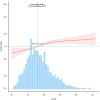
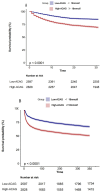
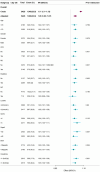
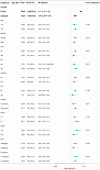
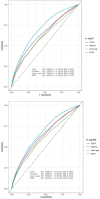
Similar articles
-
Association Between Albumin Corrected Anion Gap and 28-Day All-Cause Mortality in Patients With Acute Respiratory Failure in ICU: A Retrospective Study Based on the MIMIC-IV Database.Clin Respir J. 2025 Jul;19(7):e70100. doi: 10.1111/crj.70100. Clin Respir J. 2025. PMID: 40631543 Free PMC article.
-
The association between Albumin-Corrected Anion Gap (ACAG) and the risk of acute kidney injury in patients with acute pancreatitis: A retrospective analysis based on the MIMIC-IV database.PLoS One. 2025 Aug 22;20(8):e0330458. doi: 10.1371/journal.pone.0330458. eCollection 2025. PLoS One. 2025. PMID: 40844993 Free PMC article.
-
Prognostic value of albumin-corrected anion gap in critically ill patients with sepsis-associated liver injury: a retrospective study.BMC Infect Dis. 2025 Jul 19;25(1):928. doi: 10.1186/s12879-025-11321-7. BMC Infect Dis. 2025. PMID: 40684126 Free PMC article.
-
[Volume and health outcomes: evidence from systematic reviews and from evaluation of Italian hospital data].Epidemiol Prev. 2013 Mar-Jun;37(2-3 Suppl 2):1-100. Epidemiol Prev. 2013. PMID: 23851286 Italian.
-
Intravenous magnesium sulphate and sotalol for prevention of atrial fibrillation after coronary artery bypass surgery: a systematic review and economic evaluation.Health Technol Assess. 2008 Jun;12(28):iii-iv, ix-95. doi: 10.3310/hta12280. Health Technol Assess. 2008. PMID: 18547499
References
-
- Ronco C, Bellasi A, Di Lullo L. Implication of acute kidney injury in heart failure. Heart Fail Clin. 2019;15:463–76. - PubMed
-
- Yuzefpolskaya M, Schwartz S, Ladanyi A, Abraham J, Gale CP, Grinstein J, et al. The role of lactate metabolism in heart failure and cardiogenic shock: Clinical insights and therapeutic implications. J Card Fail. 2025;29:S1071-9164. - PubMed
-
- Legouis D, Ricksten SE, Faivre A, Verissimo T, Gariani K, Verney C, et al. Altered proximal tubular cell glucose metabolism during acute kidney injury is associated with mortality. Nat Metab. 2020;2(8):732–43. - PubMed
MeSH terms
Substances
Grants and funding
LinkOut - more resources
Full Text Sources
Medical
Research Materials
Miscellaneous

